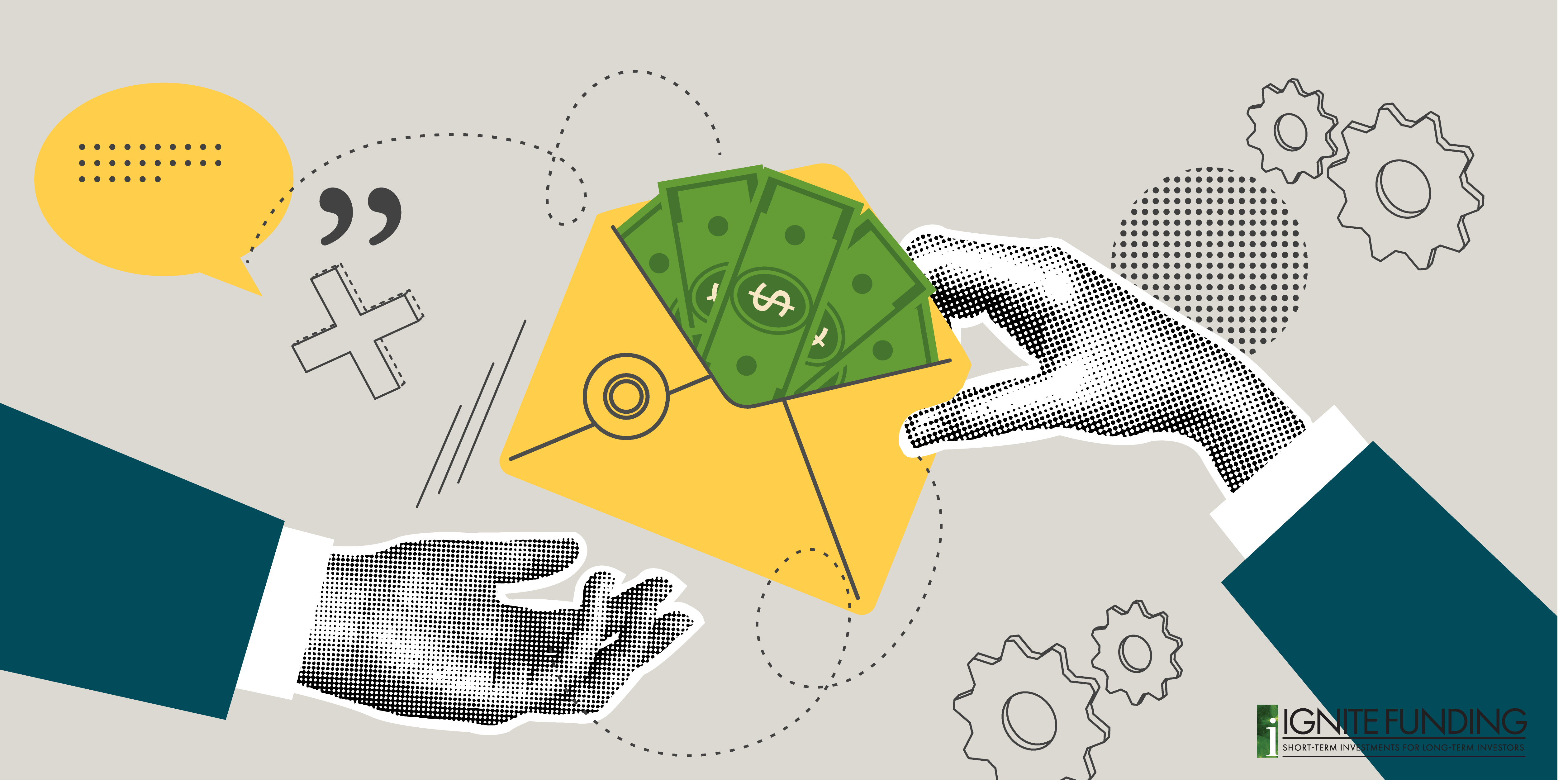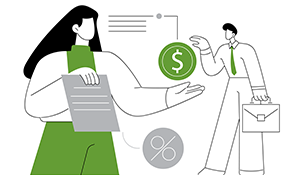Leveraging Real Estate: A Guide for Investors
Leverage is one of the most powerful tools for real estate investors. It allows individuals and companies to control more property with less capital, increasing both potential gains and risks. In this blog, we will explain the concept of leverage in real estate, explore the benefits and dangers, and discuss practical ways to use debt as a strategic advantage.

What Does Leverage Mean in Real Estate?
Leverage in real estate means using borrowed money to increase potential returns on investment (ROI). Instead of paying the full price of a property with cash, investors can finance part of the purchase with a loan. For example, if you buy a $500,000 property with $100,000 of your own money and borrow $400,000 from a lender, you are leveraging your investment. This means that $100,000 would let you control an asset worth five times more than your cash investment.
Key Terms to Know for Beginners:
- Return on Investment (ROI): A measure of how much profit you make compared to your initial investment, usually expressed as a percentage.
- Loan-to-Value Ratio (LTV): The percentage of a property’s value that is financed through debt. For example, borrowing $400,000 to buy a $500,000 property gives you an 80% LTV.
- Equity: The part of the property you own, calculated as property value minus the outstanding loan amount.
Why Does this Matter?
Leverage in real estate is important to know, as it provides key benefits such as:
- Capital Efficiency: Investors can spread their money across multiple properties instead of tying it all into one deal.
- Potential for Higher ROI: If the property gains value or earns strong rental income, returns are increased compared to an all-cash purchase.
- Tax Advantages: Interest paid on real estate loans may be deductible, which can further improve net returns.
The final takeaway is that leverage allows investors to increase returns and improve capital efficiency, but, as with all investments, it also comes with risks that need to be carefully managed.
Negative Leverage in Real Estate
While leverage can increase returns, it can also lead to larger losses. This situation is known as negative leverage in real estate. It happens when the cost of borrowing is higher than the return generated by the property. In simple terms, if your mortgage interest rate is 8% and your property only produces a 5% return, you are losing money due to the leverage. Let’s break down this concept a bit further.
Positive vs. Negative Leverage
Positive leverage occurs when property yields, whether from income or appreciation, are higher than borrowing costs. Contrary to this, negative leverage happens when borrowing costs are greater than the property’s income or appreciation. This reduces or eliminates profit. Let’s look at an example to dig deeper into the concept of negative leverage:
Let’s assume the following variable:
- Property purchase price: $1,000,000
- Loan amount: $700,000 at 7% interest
- Annual debt service: $49,000
- Net Operating Income (NOI): $45,000
In this example, the property’s NOI cannot cover the debt service. Instead of making a profit, the investor is losing money. This is negative leverage and shows the need to assess both financing costs and property performance before making a deal.
How can we avoid negative leverage? Through some of these possible actions:
- Stress Test Assumptions: Check how changes in interest rates or occupancy levels impact your returns.
- Maintain Adequate Cash Reserves: Having reserves can help cover short-term losses and prevent forced sales.
- Focus on Cash Flow Positive Assets: Always make sure that projected rental income is greater than debt obligations.
The main takeaway to keep in mind is that negative leverage reduces returns and can create financial pressure. You can avoid this situation by stress-testing deals, maintaining reserves, and focusing on positive cash flow.
How to Leverage (Use) Debt in Real Estate
Debt, when used wisely, is a valuable tool for growth. Let’s look at some practical ways to use debt in real estate while lowering risk:

- Conventional Mortgages: The most common form of leverage is conventional mortgages. They let investors borrow from banks or credit unions at relatively low interest rates. Fixed-rate loans offer stability, while adjustable-rate mortgages might provide lower initial payments. A key term to keep in mind is “debt service,” which is the total amount of money needed to cover the repayment of interest and principal on a loan for a specific period.
- Private Lending and Hard Money Loans: For investors who need quick access to capital, private lenders and hard money loans can offer flexibility. Although interest rates are usually higher, these loans work well for short-term projects like “flipping” property.
- Portfolio Leverage: Investors with multiple properties can use portfolio loans or refinancing strategies to unlock equity in existing assets. This helps them grow faster by reinvesting in new opportunities.
- Partnerships and Syndications (a group of investors pooling their money to buy larger properties that would be hard to purchase alone): Leverage does not always come from banks. Working with other investors or joining syndications lets you increase buying power while sharing the risk.
- Commercial Real Estate Financing: Larger investments in multifamily or commercial properties often require complex financing. Knowing about debt service coverage ratios (DSCR - A ratio that measures a property’s ability to generate enough income to cover its debt. A DSCR above 1.0 means the property makes enough money to pay its debts) and loan-to-value (LTV) ratios is crucial when structuring these deals.
As you can see, there are several ways to use debt as leverage, from traditional mortgages to complex commercial loans. Choosing the right strategy depends on your goals, risk tolerance, and the size of the deal.
Let’s now take a look at a case study that showcases the power and risks involved in leveraging.
Case Study: The Power and Risk of Leverage
Let’s imagine two investors, Sarah and Michael. In this scenario, Sarah buys a $200,000 rental property with cash. The property generates $16,000 in net income each year, which is an 8% return. Michael purchases the same property with a 25% down payment of $50,000 and finances $150,000 at a 6% interest rate. After paying his loan, he has a net income of $8,000. That’s a 16% return on his initial $50,000.

Now, let’s introduce some market changes. If the property increases in value by 10% in one year, Sarah’s equity rises by $20,000, reflecting a 10% return on investment. Meanwhile, Michael’s equity also grows by $20,000, but on just $50,000 invested, which results in a 40% return.
However, if rents decline and the net operating income drops to $10,000, Sarah still earns $10,000, which is a 5% return. On the other hand, Michael may have trouble making his loan payments, leading to negative leverage.
This case showcases the two-sided nature of leverage. It can speed up wealth creation significantly when markets are good, but it can also increase risk when markets shift through a drop in income or a rise in interest rates.
Tips for Using Leverage Wisely
- Understand Your Risk Tolerance. Leverage magnifies outcomes. Conservative investors may prefer lower leverage ratios.
- Focus on Cash Flow. Appreciation is uncertain. Stable, positive cash flow is the safest way to meet debt obligations.
- Maintain Strong Credit. Better credit means access to lower interest rates, which reduces the risk of negative leverage.
- Diversify Investments. Avoid putting all leveraged capital into one property or market.
- Work with Trusted Lenders and Advisors. Professional guidance can help structure financing in a way that balances growth with safety.
The use of leverage wisely requires discipline, planning, and diversification. By always prioritizing cash flow and financial stability, you increase the overall probability of increasing the financial viability of your real estate investment.
What are Some Frequently Asked Questions About Leveraging Real Estate?
Is leverage only for experienced investors?
No. Leverage can be used by both beginners and seasoned professionals. However, the risks are higher for those who do not fully understand how debt impacts cash flow and ROI.
Can you lose more than your initial investment with leverage?
Yes. Because leverage involves debt, failing to meet loan obligations can lead to foreclosure. This can cause you to lose the property and any equity you have built.
Is it better to invest in cash or with leverage?
It depends on your goals and how much risk you can handle. Cash purchases reduce risk and simplify ownership. Leverage, on the other hand, can help you grow wealth faster but carries a higher risk.
What is important to keep in mind is that leverage provides investors with flexibility. It works for both beginners and experts, but as with all investments, it does require careful planning and an awareness of the potential risks involved.
Conclusion: Mastering the Art of Leverage in Real Estate
Leveraging real estate strategies has created wealth for investors who recognize both the possibilities and the risks. The idea is straightforward: use borrowed money to control larger assets, boost returns, and increase wealth more effectively. However, executing this strategy requires discipline, careful research, and a good grasp of the risks, like negative leverage.
For investors, the key question is not whether to use leverage, but how to use it wisely. By understanding how leverage works, keeping an eye on debt structures, and prioritizing steady cash flow, you can take advantage of leverage without falling into its traps.
Mastering leverage involves finding the right balance between opportunity and caution. When it is used wisely, leverage can significantly impact real estate wealth building.



